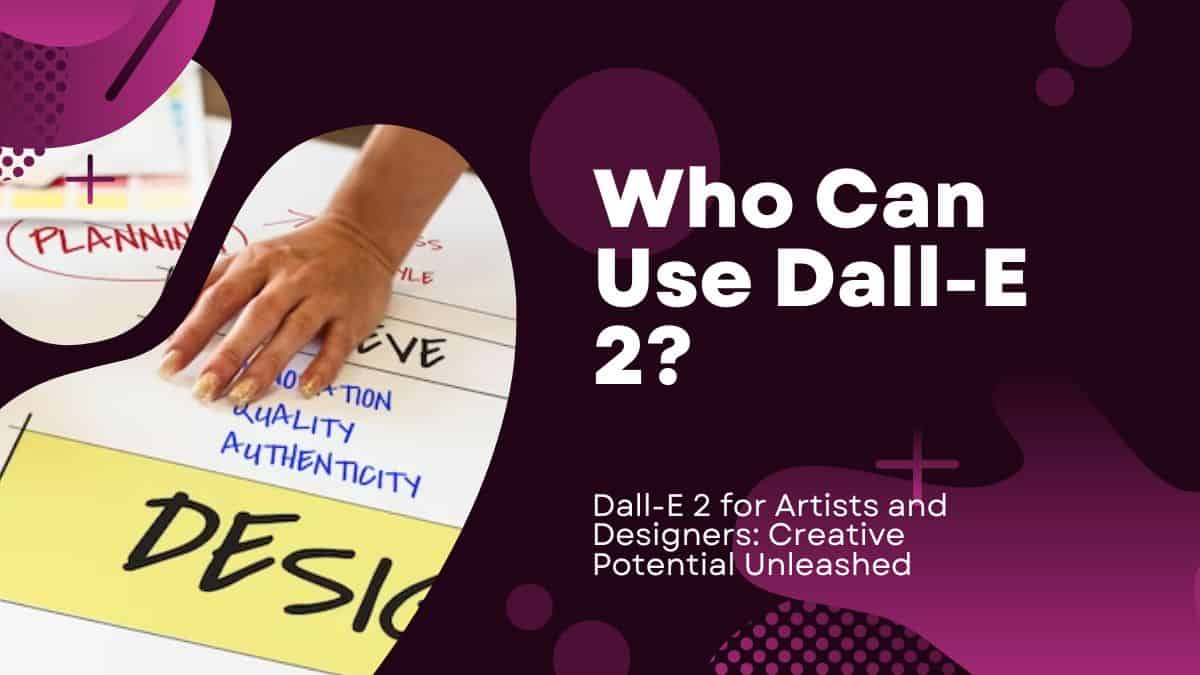Last Updated on
Dall-E 2 is an artificial intelligence model that OpenAI developed. It generates high-quality images from textual input. This technology has captured the attention of many people, including designers, artists, and researchers.
In this post, we’ll find out who can use Dall-E 2 and how it can benefit different entities.
Who Can Take Advantage of Dall-E 2?
Artists and Designers
Dall-E 2 can be a valuable tool in your creative process if you’re an artist or a designer. You can use the technology to generate visual representations of your ideas, whether a character design, a product concept, or a logo.
You can instruct the model to create an image that matches your vision by providing textual input. This can save you time and effort, allowing you to focus on the creative aspects of your work.
Researchers and Educators
Dall-E 2 can also be useful for researchers and educators. You can use the technology to generate images for your presentations or papers, making them more engaging and visually appealing.
For example, if you’re giving a presentation on the human body, you can use Dall-E 2 to generate high-quality images of different organs and systems. This can help your audience better understand the concepts you’re presenting.
Content Creators
Dall-E 2 can help you create visually appealing content for your audience if you’re a content creator. Whether you’re a social media influencer, a YouTuber, or a blogger, you can use the technology to create images that complement your content.
For example, if you’re creating a tutorial on cooking, you can use Dall-E 2 to generate images of different ingredients and cooking techniques.
Businesses
Dall-E 2 can also benefit businesses that rely on visual content to market their products or services. You can use the technology to create images for your website, social media, and advertising campaigns. You can instruct the model to create images that reflect your brand’s identity and values by providing textual input. This can help you stand out from your competitors and attract more customers.
Journalists
Journalists can also use Dall-E 2 to enhance their storytelling. They can generate images that complement their articles to make their content more engaging and memorable.
For example, if you’re writing an article on climate change, you can use Dall-E 2 to generate images of melting glaciers, rising sea levels, and other environmental phenomena.
Accessibility
Dall-E 2 can also benefit individuals with disabilities, including those who are blind or visually impaired. By generating images from textual input, Dall-E 2 can visually represent the content, making it more accessible to these individuals. This can help bridge the gap between the visual and non-visual worlds, allowing more people to access and enjoy visual content.
Limitations
Despite its many benefits, Dall-E 2 has some limitations. First, the technology is still in its early stages of development, and its output may not always be accurate or relevant to the input.
Second, Dall-E 2 is a resource-intensive technology that may require significant computing power and technical expertise. Finally, the technology raises important ethical and societal questions, such as potential misuse or bias.
Conclusion
Dall-E 2 is a versatile technology that can benefit many individuals and industries. Whether you’re an artist, researcher, content creator, or business owner, Dall-E 2 can help you create high-quality images that meet your needs.



